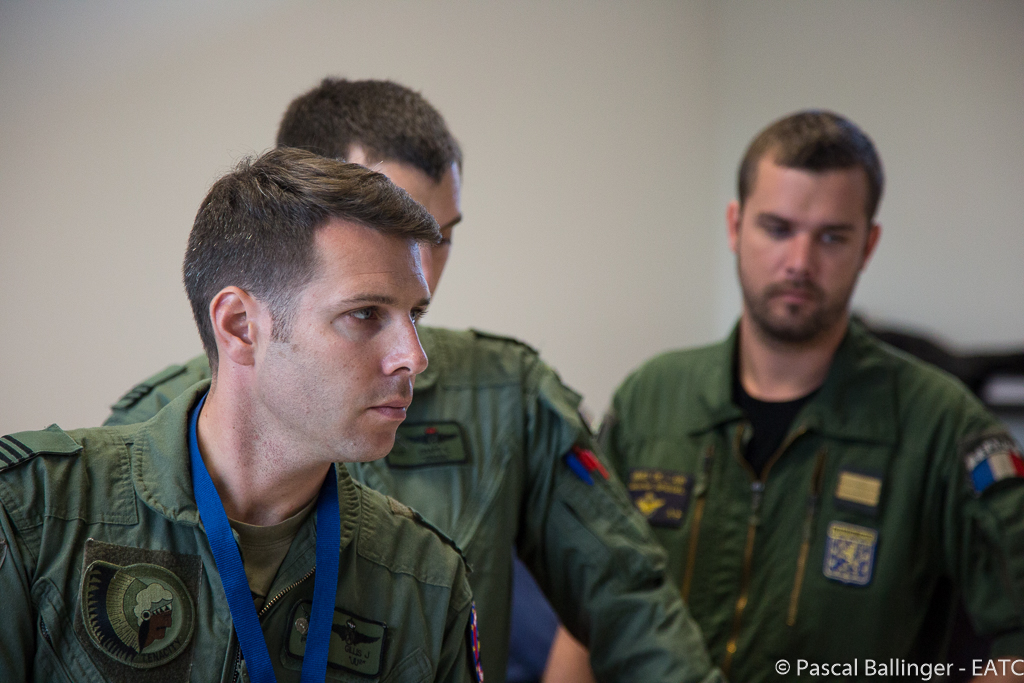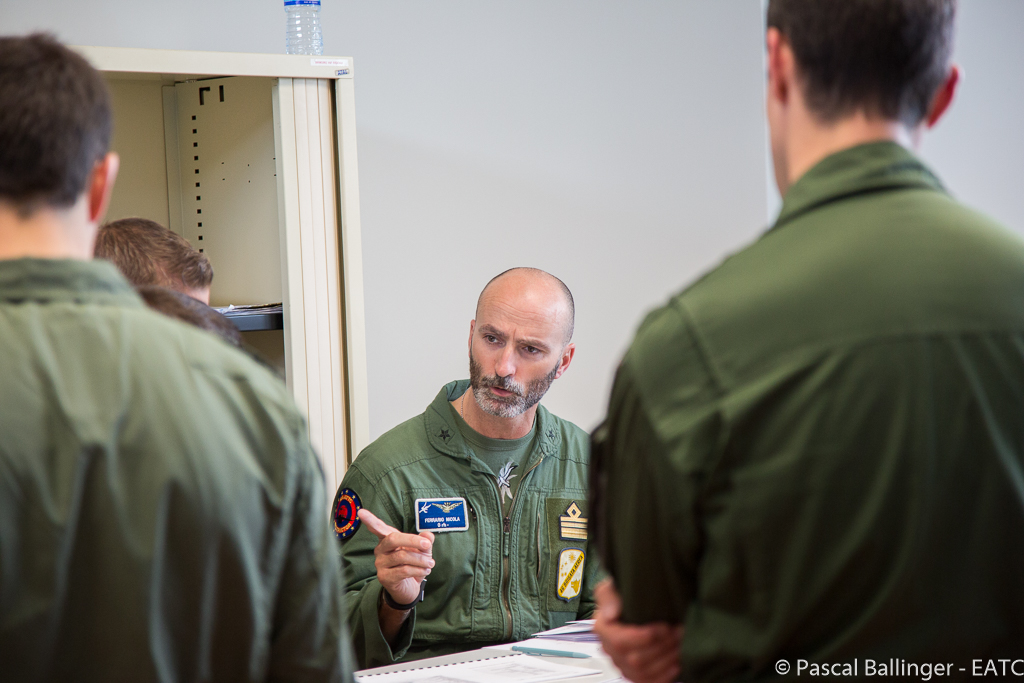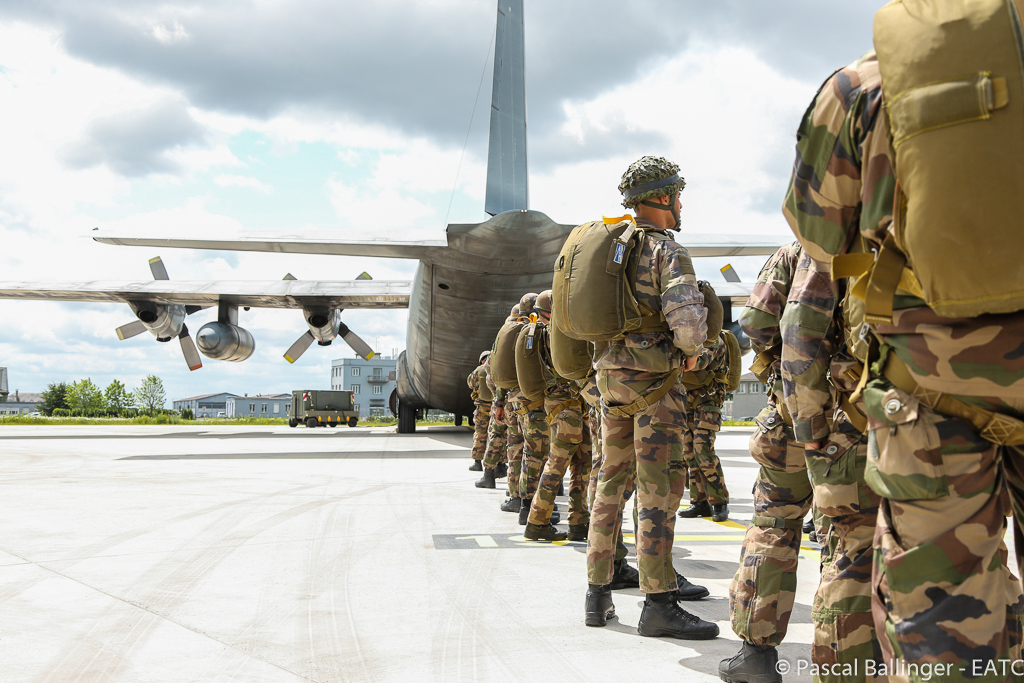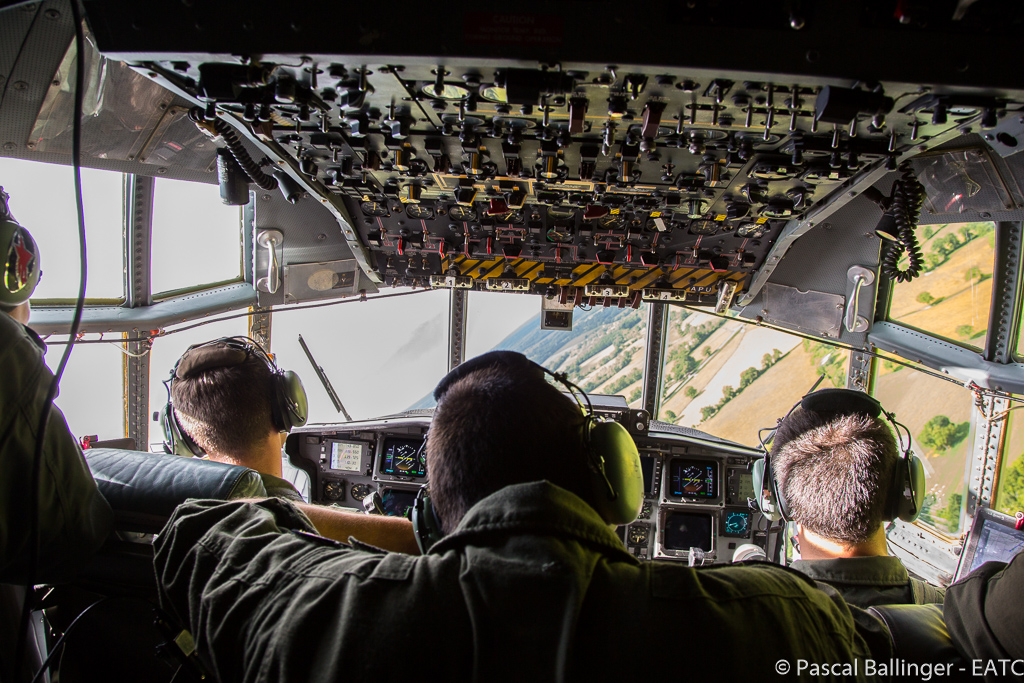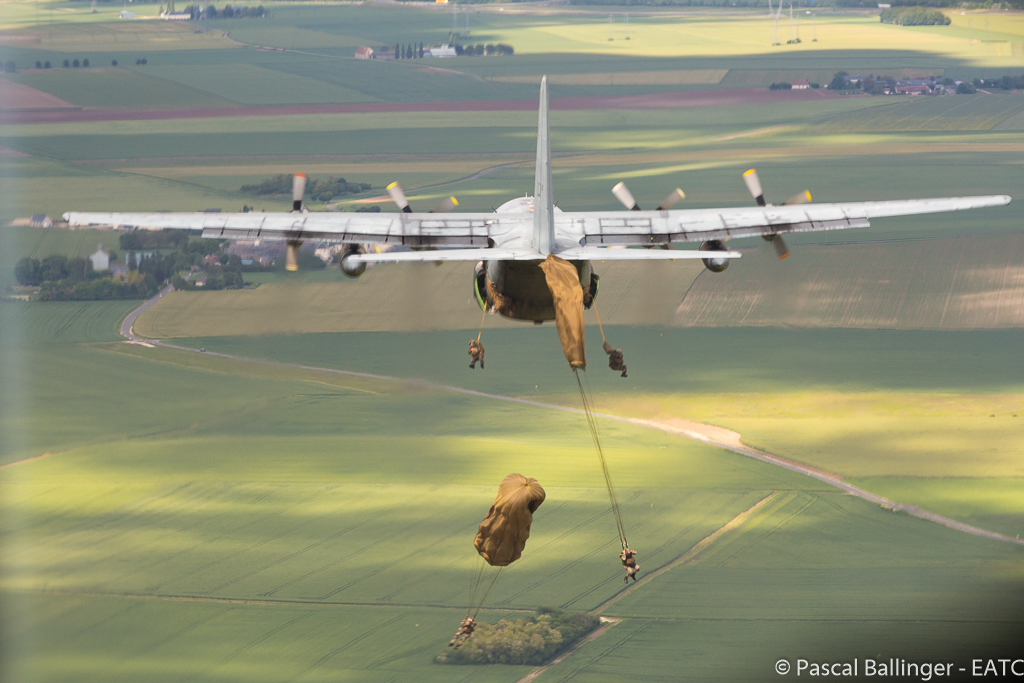The French C-130H has the lead of the formation.
EAATTC is first a course before being a training, and this is where lies the difference with EATT. Course means evaluation, grading sheets and instructors. To enable a better understanding of what this course is, we had the opportunity, on Wednesday 20 May 2015, to follow the Belgian C-130H crew during one day.
The day starts early in the morning with a general mission briefing, which provides the crews with a broad overview of the missions of the day. They also receive the latest weather forecast and conditions they can expect to fly with. This is followed by a briefing from the intelligence officer, who presents the scenario.
The day starts early in the morning with a general mission briefing
Today, the mission is to reinforce friendly forces positioned next to the border of an enemy state. Three waves of two aircraft each will take off and first separate to make a touch and go on different airfields. After this first maneuver, the two aircraft will have to join together and, by minimizing the communications and flying about 150 meters above ground, head to the dropping zone where 40 paratroopers need to be dropped.
What may sound quite simple is in reality a very complex task for the two crews – not only both the Belgians and the French have to apply the common EATC procedures, but they are also constantly watched by an EAATTC Instructor. The instructor checks the mission preparation, attends the briefings, asks questions if things are not clear enough in his eyes … and sometimes gives advice on how the mission could be better fulfilled.
The instructor checks the mission preparation, attends the briefings, asks questions if things are not clear enough in his eyes … and sometimes gives advice on how the mission could be better fulfilled.
At 1100Z is “step time” – which means that the crews head to the aircraft and prepare for the mission. When the crews arrive on the platform, the paratroopers from the 1st RCP (Régiment de Chasseurs Parachutistes) are already waiting behind the aircraft. The loadmaster and jumpmaster give them the last orders before they can enter the French and Belgian C-130s. It will not be an easy flight for these soldiers because while performing low level flights the pilot will follow the terrain and the paratroopers, seated at the back of the airplane, are in for a rocky flight – and some stomachs do not appreciate that.
The paratroopers from the 1st RCP (Régiment de Chasseurs Parachutistes) are already waiting behind the aircraft.
At precisely 1250Z, the French C-130 takes off followed some four minutes later by his Belgian wingman. The pilot in command and his first officer have to perform a lot of different tasks at the same time: they have to navigate, keep radio contact with the air traffic control, fly in order to let enough space to the leader airplane, while every single action of the flight crew is being watched and examined by EAATTC Instructors, seated in the cockpit just behind the pilots – and every error will be addressed during the debriefing that will take place just after the end of the mission.
The pilot in command and his first officer have to perform a lot of different tasks at the same time
To put more pressure on the crews, the weather conditions changed every five minutes, going from clear skies with nice sunshine to heavy rain and dark clouds.
But eventually the pilot in command and his first officer did a perfect job and managed to reach the drop zone at the time that was foreseen.
The paratroopers were happy to hear the signal to jump and the C-130s could head back at low altitude to the base.
The paratroopers were happy to hear the signal to jump
Once back at the base the crews were debriefed while the aircraft was being prepared by the maintenance personnel for its next mission.
The aircraft was being prepared by the maintenance personnel for its next mission
Next week, more emphasis will be put on flights in medium to significant threat levels and in-air decision making. Moreover the missions will be supported by fighter aircraft and AWACS, and RADAR threat will be simulated.
At the end of the second week, when every crew has executed at least three flights as lead and one flight as wingman, they will be the first graduates of the EAATTC multi-ship course.
Find more picutures here.




